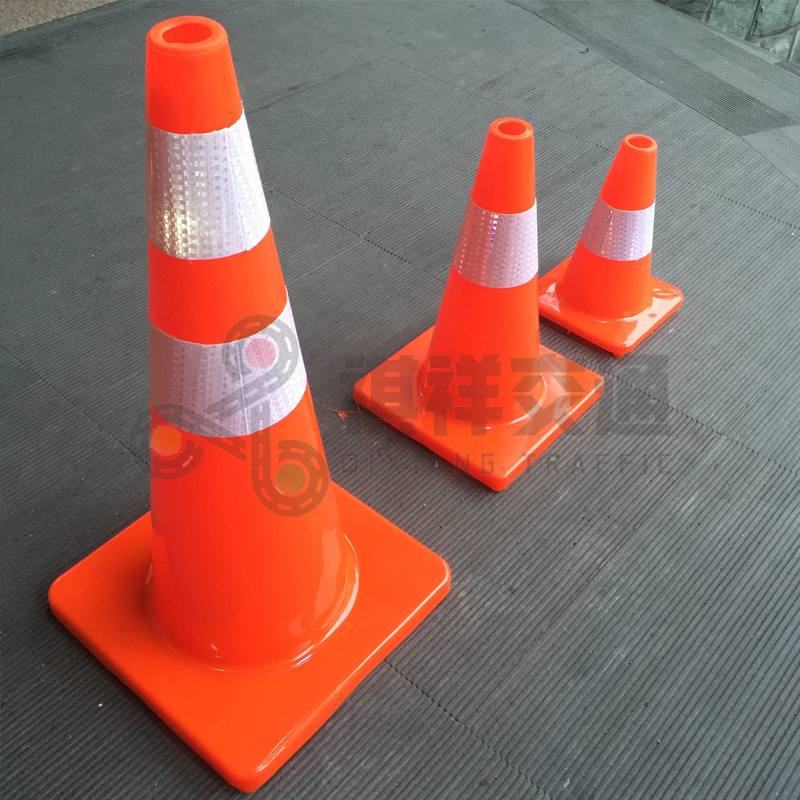Traffic cones are a ubiquitous sight on roads, construction sites and event venues and are an important tool for directing traffic, marking hazards and ensuring safety. However, the effectiveness of traffic cones depends largely on their correct placement. This article takes an in-depth look at the specifications for traffic cone placement, highlighting best practices for maximizing their effectiveness while ensuring safety.
Importance of Traffic Cones
Before we get into the specifics, it’s crucial to understand why traffic cones are essential. These colorful, often reflective devices are highly visible even in low-light conditions. They have a variety of uses, including:
1. Direct Traffic: Traffic cones guide vehicles and pedestrians, helping to prevent accidents and maintain order.
2. Mark Hazards: They alert drivers and pedestrians to potential hazards such as potholes, construction areas, or accident scenes.
3. Create Safe Work Zones: For construction and maintenance workers, traffic cones define safe work zones and protect workers from oncoming traffic.
General specifications for traffic cone placement
The placement of traffic cones is governed by various standards and guidelines to ensure they are effective. Here are some general specifications:
1. Visibility: Traffic cones should be placed in a manner to maximize their visibility. This usually means placing them in a straight line and making sure they are not blocked by other objects.
2. Spacing: The distance between traffic cones depends on the speed limit of the road and the nature of the hazard. For example, on highways, cones should be placed closer together to ensure drivers are adequately warned.
3. Height and Size: Traffic cones should be sized appropriately for the setting. Larger cones (28 inches or larger) are typically used on highways, while smaller cones (18 inches) are suitable for low-speed areas.
4. Reflectivity: For night use or low light conditions, traffic cones should have a reflective ring to increase visibility.
Specific guidance for different scenarios
Road construction and maintenance
In road construction and maintenance areas, the placement of traffic cones is critical to worker and driver safety. Generally follow these guidelines:
1. Advance Warning Zone: Cones should be placed in front of the work area to alert the driver. Distances vary based on speed limits; for example, on a 60 mph road, the cones might start 1,500 feet before the work zone.
2. Transition Area: This is where traffic is directed from the normal path. Cones should be placed closer together, usually 20 feet apart, to create a clear, continuous line.
3. Buffer Space: Buffer space between the transition area and the work area provides an additional layer of safety. The cone should continue across the area to maintain a clear border.
4. Termination Zone: After the work zone, the cone should gradually taper to direct traffic back to its normal path.
Event Management
For events such as marathons, parades or concerts, traffic cones help manage vehicle and pedestrian traffic. Here are some placement tips:
1. Entry and Exit Points: Cones should be used to clearly mark entry and exit points for vehicles and pedestrians.
2. Crowd Control: Cones can be used to create barriers and direct the flow of people, preventing overcrowding and ensuring orderly movement.
3. Parking Zones: In parking lots, cones designate parking spaces, direct traffic flow, and mark sidewalks.
Emergency
In emergency situations such as accidents or natural disasters, placing traffic cones quickly and efficiently is critical:
1. Immdiate Hazard Marking: Cones should be placed around hazards as soon as possible to prevent further accidents.
2. Traffic Diversion: Cones can be used to detour and direct traffic away from emergency locations.
3. Safe Zone: For emergency responders, cones can delineate a safe zone for operations.
Best Practices for Traffic Cone Placement
To ensure optimal placement of traffic cones, consider the following best practices:
1. Regular Training: Personnel responsible for placing traffic cones should receive regular training on the latest guidelines and best practices.
2. Routine Inspections: Cones should be inspected regularly for damage and replaced as necessary to maintain visibility and effectiveness.
3. Use of Technology: In some cases, technology such as GPS and traffic management software can assist in precise cone placement, especially in complex scenes.
4. Public Awareness: Educating the public about the importance of traffic cones and the need to respect them can improve overall safety.
In conclusion
Traffic cones are a simple yet powerful tool for managing traffic and ensuring safety. By adhering to their placement specifications, we can maximize their effectiveness and protect workers and the public. Whether on a busy highway, at a busy event or during an emergency, the proper use of traffic cones is an important part of traffic management and safety protocols.
If you need transportation products, please feel free to contact traffic cones vendor Qixiang for more information.
Post time: Sep-13-2024







